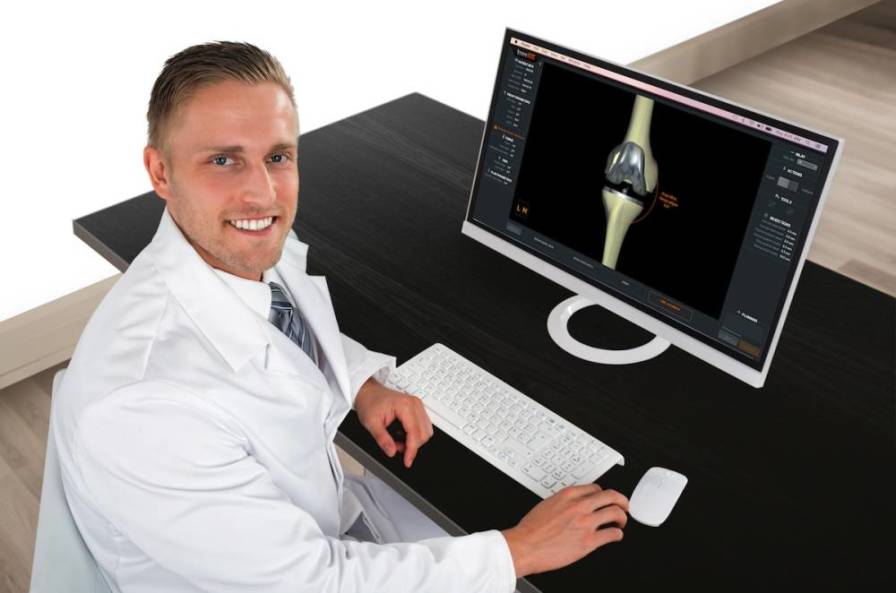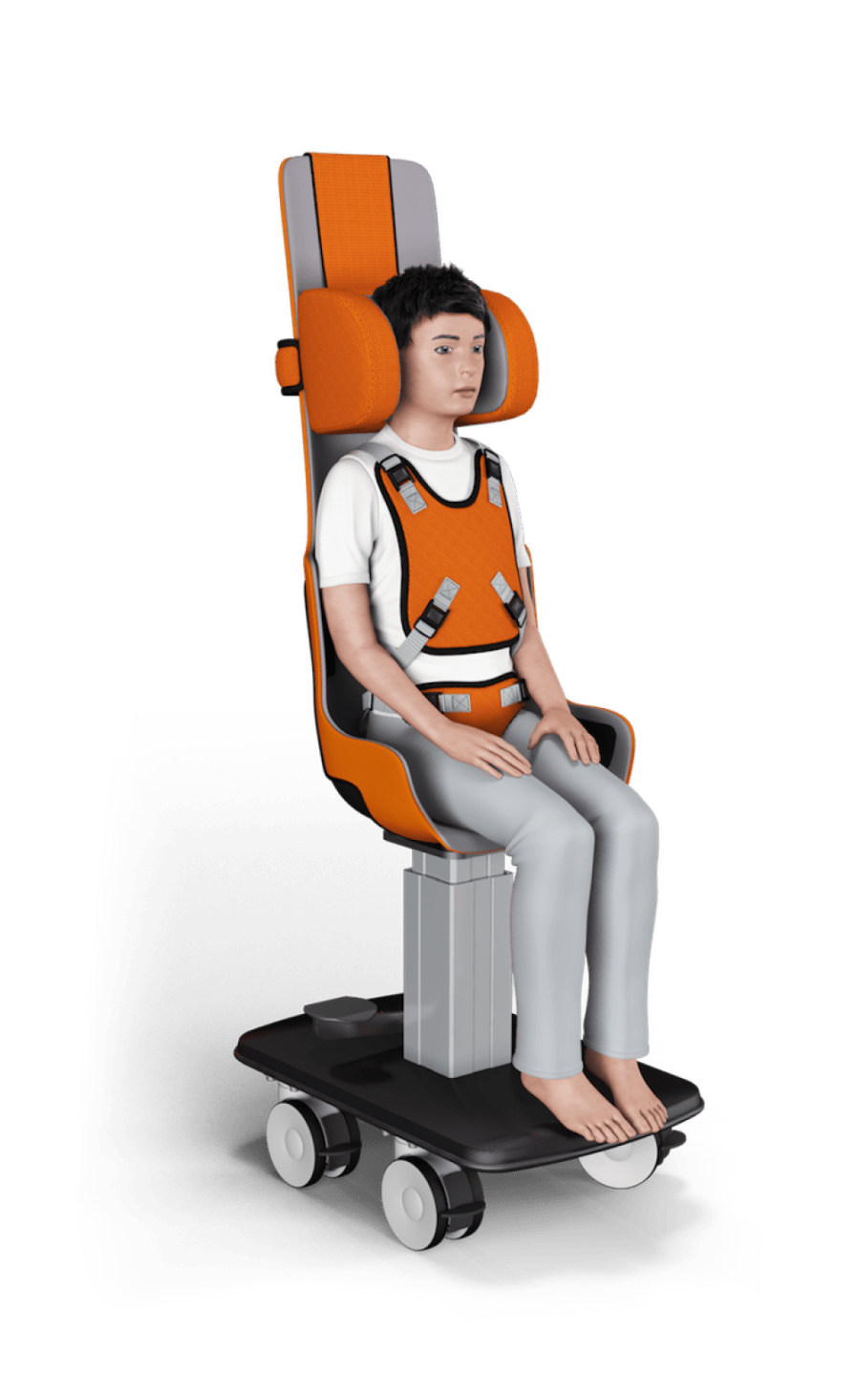


The scope of Total Hip Arthroplasty (THA) has expanded considerably in recent years to include younger, more active patients. The surgical objectives have evolved from merely relieving pain to restoring full function.7
hipEOS is used to plan a primary, total hip arthroplasties starting with an optional plan that includes the selection and position of the two implant components in 3D based on the patient’s anatomy. The plan can be adjusted by the physician with immediate feedback on how changes affect relevant clinical parameters.
Thanks to the full body, weight-bearing 2D/3D EOS images, hipEOS can be used to anticipate the consequences of the surgical strategy on leg length discrepancies, femoral offset and femoral torsion; three key criteria for successful total hip arthroplasties.
Clinical benefits
- Patient-matched implant size selection5without complex radiological calibration protocols
- Patient-specific, 3D planning for cup inclination/anteversion, stem torsion and localization of the femoral neck resection plane, without the need for additional CT exams
- Real-time, 3D simulation of the restoration: automatic calculation and display of key clinical parameters including lower limb discrepancy and femoral offset variation
Facility-wide efficiency
- Automatic proposal of implant size and position according to the 2D/3D patient data set
- Online database of 3D templates from multiple implant manufacturers
- Online access from any computer through a compliant server
- Customizable, patient-specific planning reports
Bibliography
- Comparison of radiation dose, workflow, patient comfort and financial break-even of standard digital radiography and a novel biplanar low-dose X-ray system for upright full-length lower limb and whole spine radiography. Dietrich TJ et al. Skeletal Radiol. 2013.
- Diagnostic imaging of Spinal deformities: Reducing Patients Radiation Dose With a New Slot-Scanning X-ray Imager. Deschenes S, Charron G, Beaudoin G,Labelle H, Dubois J, Miron M, Parent S. Spine April 2010, 35 (9): 989. .
- Ionizing radiation doses during lower limb torsion and anteversion measurements by EOS stereoradiography and computed tomography. Delin C et al. Eur J Radiol. 2014
- EOS microdose protocol for the radiological follow-up of adolescent idiopathic scoliosis. Ilharreborde B. et al. Eur Spine J. 2015
- Preoperative three-dimensional planning of total hip arthroplasty based on biplanar low-dose radiographs: accuracy and reproducibility for a set of 31 patients. Mainard, D et al. Communication at ISTA 2014.
- The EOS imaging system and its uses in daily orthopaedic practice. Illes T, Somoskeoy S. Int Orthop2012 Feb 28.
- Accuracy of Digital Preoperative Templating in 100 Consecutive Uncemented Total Hip Arthroplasties, Journal of Arthroplasty, 2013-02-01, R.Shaarani & al
- What proportion of patients report long-term pain after total hip or knee replacement for osteoarthritis? A systematic review of prospective studies in unselected patients. Beswick, A. D., V. Wylde, R. Gooberman-Hill, A. Blom and P. Dieppe (2012). BMJ Open.
- Meijjo Hospital, Nagoya, Japan
More products from this supplier
- United States
- United States
- United States
- United States
- United States
- United States
- United States
Loading...









